Are Fermented Foods High in Histamine: A Look at Vegan Fermented Vegetables
Fermented vegetables that do not contain animal-sourced and/or high protein ingredients do not contain relevant or detectable levels of histamine and are generally safe from biogenic amine concerns.
Also, histamine isn’t necessarily a bad thing. It gets a bad rep, but histamine is necessary for the human body’s function. Histidine is an essential amino acid, and histamine is vital to the proper function of the immune system.
Ordinary, healthy people have no problem when consuming moderate amounts of histamine in foods. Good gut microorganisms normally degrade histamine in the gut, and the enzyme DAO (Diamine Oxidase) in the gut also degrades histamine.
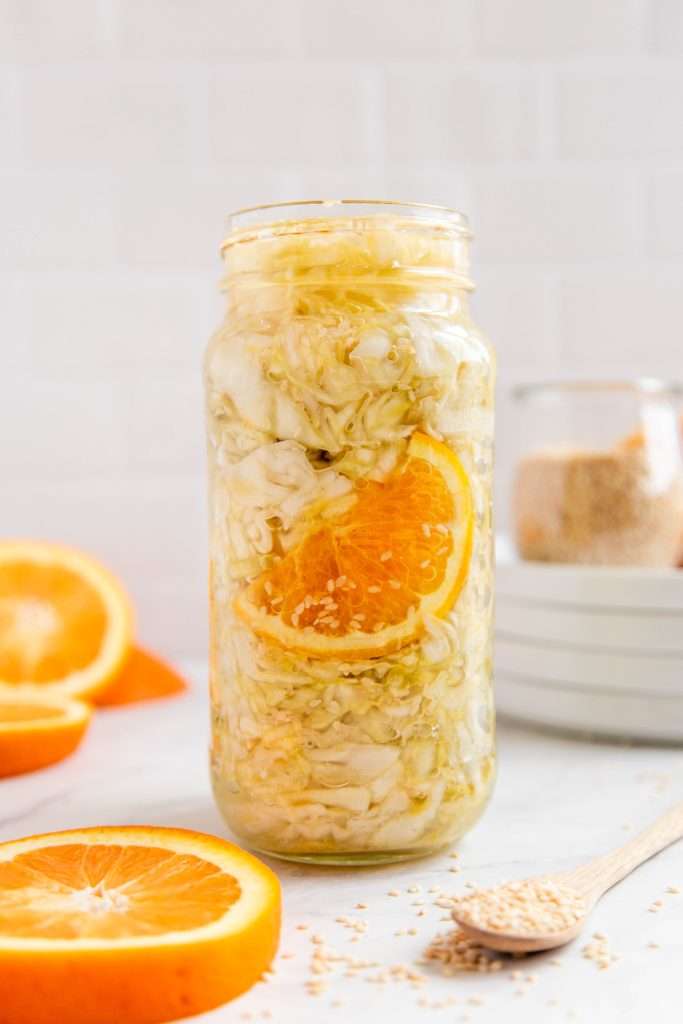
Are Fermented Foods High in Histamine
So, for instance, fish sauce averages HIGH histamine levels of around 575 mg/kg. According to the FDA, levels above 200 mg/kg (ppm) have been associated with human illness (histamine poisoning). So the “safe” limit the FDA sets is under 200 mg/kg of histamine.
The ingredients included in fermented vegetables, the fermentation method, the salt concentration, the fermentation temperature, and the amount of time it was fermented all influence the levels of biogenic amines in fermented foods.
That said, many fermentation recipes incorporate animal products into things like sauerkraut and kimchi. People even make sauerkraut with added whey, which can greatly increase the biogenic amine (histamine) levels.
The only reason some kimchi contains relevant histamine levels is that many kimchi recipes include fish paste. Animal ingredients add the amino acid histidine to fermented foods; thus, they can add histamine.
Are Fermented Foods High in Histamine: A Look at Animal Ingredients in Fermentation
Fermented vegetables that contain animal ingredients, such as fish paste or whey from dairy, will be high in histamine.
Fermented dairy yogurt may have histamine, cultured meats, and cheese have histamine, and some cultured soy products may have histamine.
This is because the high protein ingredients in the foods contain the amino acid histidine that microbes can convert to histamine using the enzyme histidine decarboxylase.
Fermented vegetables made with only vegetables, salt, water, and spices cannot physically contain relevant levels of histamine… this is because the precursor amino acid histidine is not present in relevant amounts in the ingredients, so there’s little to no histidine for microbial enzymes to decarboxylate into histamine.
Also, the Lactobacillus spp. in fermented vegetables are able to break down any histamine created with more enzymes.

Microbes in Fermented Vegetables Break Down Histamine
Certain species of Lactobacillus found in fermented vegetables can also break down histamine. These species of Lactobacillus can reduce the overall biogenic amine content in all types of fermented vegetables.
This is why it is important to ferment your vegetables for a long enough time (21-28 days usually; some vegetables are good at 14 days).
Are Fermented Foods High in Histamine? Specifically Sauerkraut?
Very few vegetables contain relevant levels of histamine, and any relevant levels are usually a result of spoilage microorganisms. (This does not apply to beans, legumes, and starchy vegetables which have varying amino acid content).
Sauekraut made with only cabbage, salt, and water cannot physically contain relevant levels of histamine. Now if you have a diagnosed histamine intolerance, fermented cabbage might still be a concern for you because of other compounds.
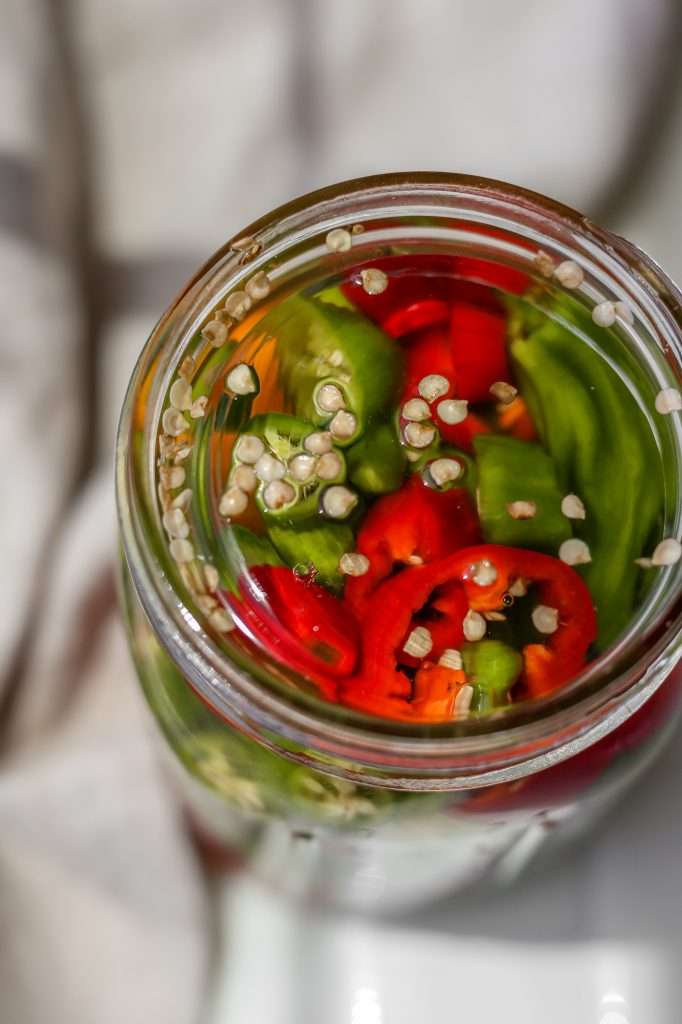
People with diagnosed histamine intolerance
Certain green leafy vegetables are high in other biogenic amines like putrescine, cadaverine, and tyramine. These biogenic amines are competing substrates for an enzyme called DAO. DAO breaks down histamine in the human body.
Most people with histamine intolerance have inadequate DAO, so eating foods with competing substrates is not the best idea. For this reason, people on low histamine diets are told to avoid spinach, kale, eggplant, tomatoes, and avocado.
People with histamine intolerance should avoid old, aged, and preserved foods, especially foods with ingredients high in the amino acid histidine. This includes canned fish, aged meats, cured meats, beans, smoked fish, and high-protein leftovers.
It should be noted that histamine intolerance can be reversed by reestablishing a healthy gut microbiome.
Obviously, if you have a diagnosed histamine intolerance, follow any recommendations provided by your doctor.
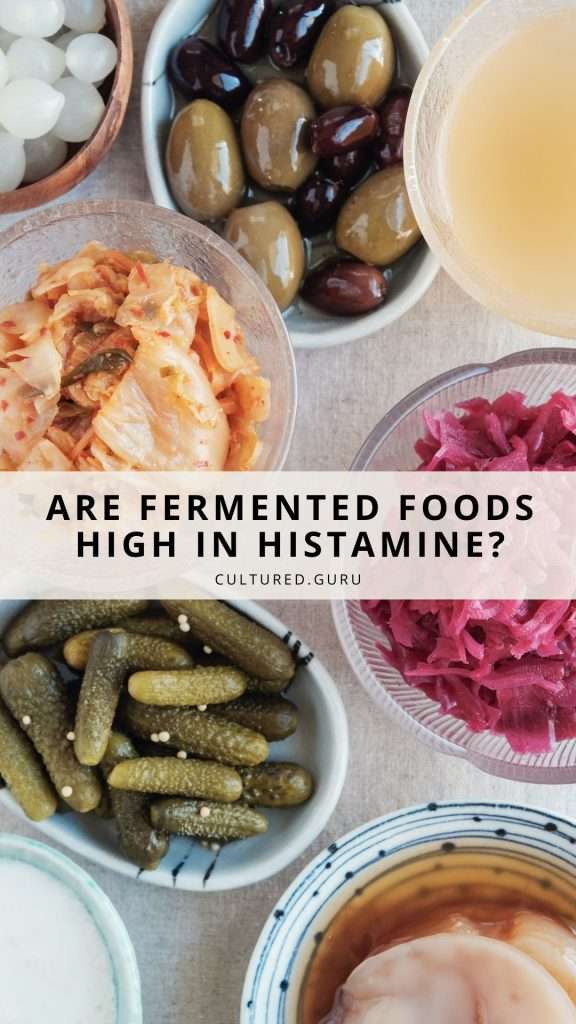
More Blogs to Read
- The Complete Guide to Salt Fermentation
- The Perfect Lacto Fermentation Salt Ratio for Fermenting Vegetables
- What Makes Sourdough Healthier and Easy to Digest?
References
Frias, Juana & Martinez-Villaluenga, Cristina & Peñas, Elena. (2016). Fermented Foods in Health and Disease Prevention.
Biogenic Amines in Plant-Origin Foods: Are they Frequently Underestimated in Low-Histamine Diets?
Histamine and Other Biogenic Amines in Food. From Scombroid Poisoning to Histamine Intolerance
Reduced biogenic amine contents in sauerkraut via addition of selected lactic acid bacteria
Changes in biogenic amine concentrations during sauerkraut storage











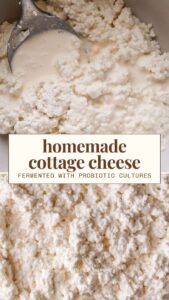

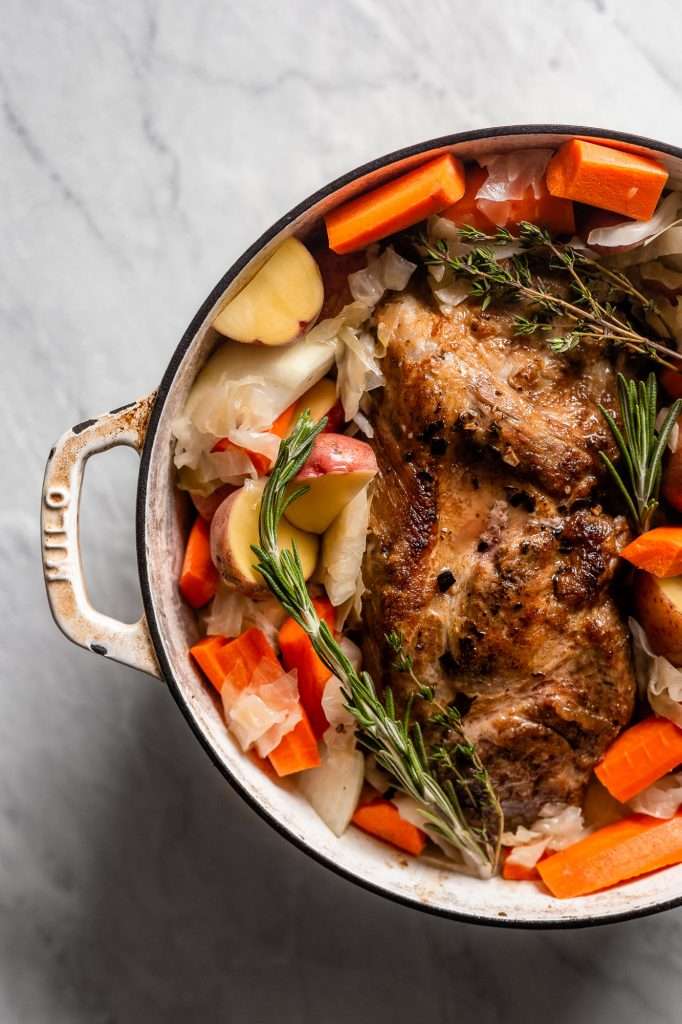
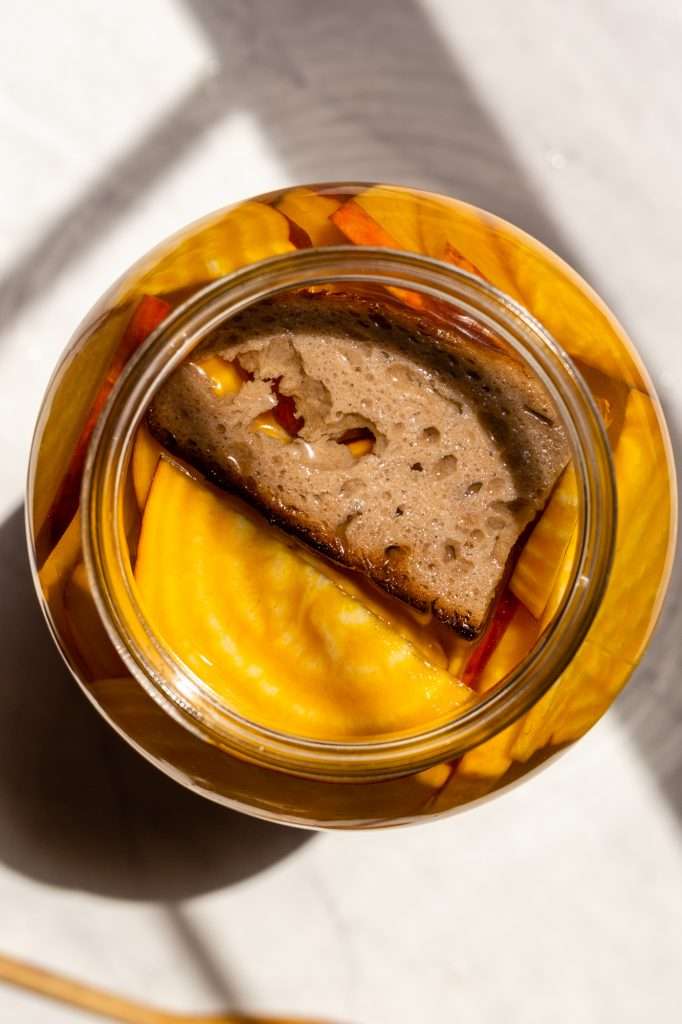

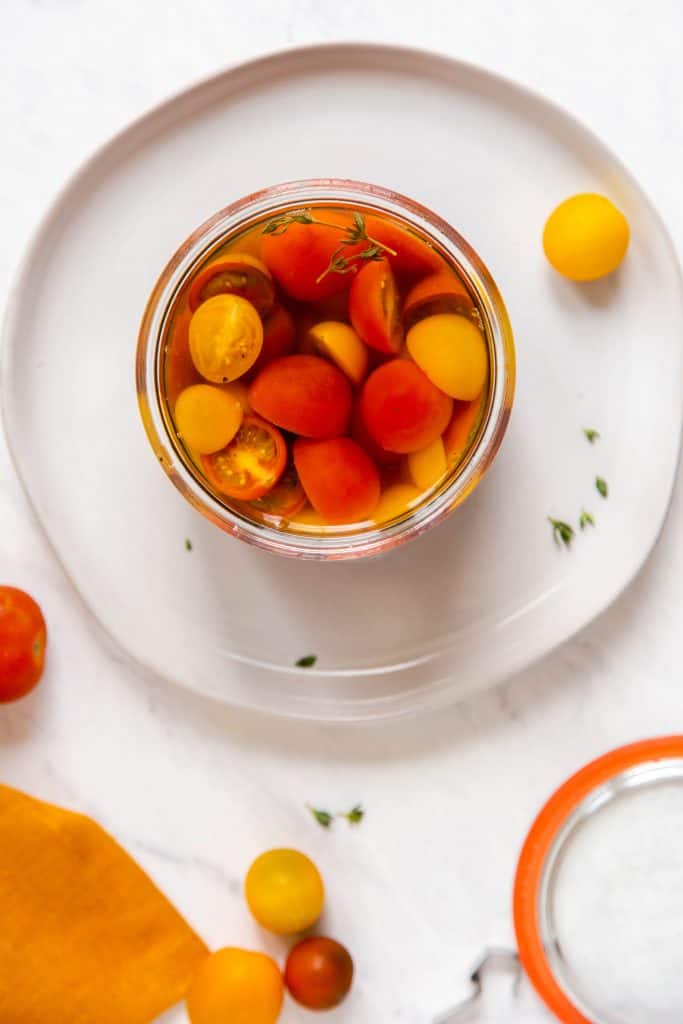
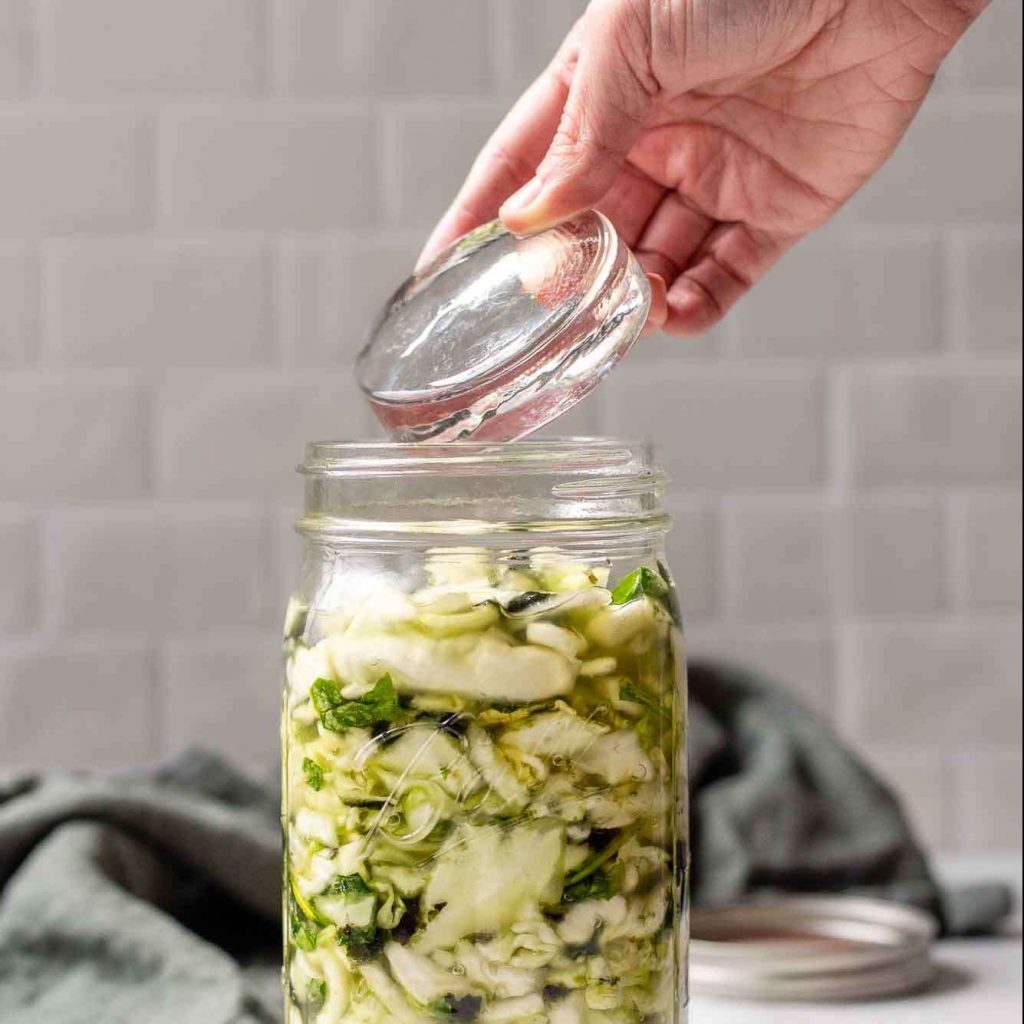

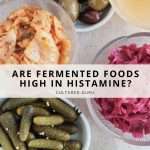
Are vegetable ferments the only low histamine option, or is water kefir low as well? What about kombucha? Thanks!
I’ve never tested them for histamine levels, but my guess would be that water kefir and kombucha are also low… since tea and sugar water don’t have a lot of the amino acid histidine.
If I eat a lot of animal fat and protein and I have healthy gut, than I will experience histamine issues?
No, not necessarily. Histamine intolerance is normally caused by insufficient DAO, which is oftentimes related to poor gut health. I do not provide medical advice, as I am not a physician. So if you have concerns about histamine issues and your diet, you should see a medical professional.
I’ve read this post with great interest, as I’ve wanted to eat fermented foods for a looooong time, but have some histamine issues. Read any list of foods to avoid on a low histamine diet, and fermented foods will be in there… But indeed, maybe not ALL fermented foods? I can’t wait to try fermented vegetables again!
I have 2 questions:
– Vegetables themselves contain no histamine… But could histamine be created during the fermentation process? (The last source you provided states that histamine was “virtually below detection limits”, which seems to show the contrary!)
– Certain strains of lactobacillus have been shown to break down histamine. Are these common strains? (i.e. will I have them in my ferments?) Is there a way to favor these strains?
Thank you for this great post and website!
If you read the blog post, I discuss that microorganisms in fermented foods cannot just “create” histamine. The vegetables and ingredients in the fermented food would have to contain the starting amino acid histidine. Microbes need histidine to make histamine.
so the last source I provided states that histamine, tryptamine, and spermine were virtually below detection limits… that’s because there’s basically no histidine in cabbage for the microbes to turn into histamine. Some sauerkrauts are produced with dairy whey added, so some sauerkraut samples contain histamine.
The best way to favor the strains of Lactobacillus through wild fermentation is to use the proper salt concentration and to ferment vegetables for at least 21 days.
Glad you enjoyed the post!
Great! Thank you for the reply!
Hi Kaitlynn!
You know, I am such a huge fan of fermented food, especially when I come across your unique fermentation website!
I have a question:
Is it possible that consuming even high-quality fermented vegetables (2,5% salt for at least 14 days etc) and at the same time have a high protein diet (I am also a high meat-eater) can cause histamine issue though?
If the answer is yes, because I love fermentation so much, I am so much willing to change for the better!!
Much Love!
I do not give individualized dietary recommendations or medical advice. Consuming fermented foods and a high animal protein diet is only an issue for people with diagnosed insufficient DAO (histamine intolerance). For general overall gut health, a plant-forward diet is best.
Hi Kaitlynn,
I understand that plant-based ferments themselves may not contain histamine and that “certain species of Lactobacillus found in fermented vegetables are also capable of breaking down histamine”, but aren’t the other Lactobacillus species and various probiotics commonly produced through fermentation high histamine ‘producers’? Possibly the point of the blog was just to clarify that the ferment itself contains no histamine but it also makes it sound like fermented vegetables are safe for those with mast cell activation or histamine issues while animal products are the problem… Sorry, I don’t mean to be a pain. You have a wonderful site, just seeking to clarify 🙂
Yes, the microbes in fermented foods can produce histamine, but only if the precursor amino acid histidine is present. Most vegetables do not contain any of the amino acid histidine. Lactobacillus cannot just magically create histamine from thin air… They can only produce histamine through enzymatic action, using the enzyme histidine decarboxylase to convert the amino acid histidine into histamine.
If there’s no amino acid histidine in the food being fermented, then the microbes cannot make histamine.
This blog is clearly stating that fermented foods containing histamine is dependent on the amino acid content of the ingredients used in making the fermented food.
There is nothing in this blog post that states that fermented foods are inherently safe for people with diagnosed insufficient DAO or histamine intolerance, read the last paragraph, please.